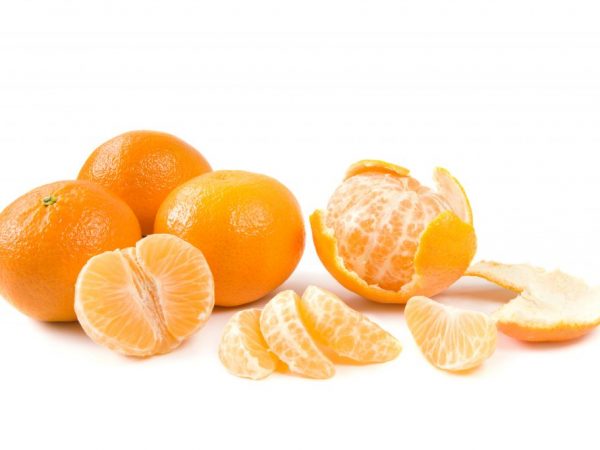Differences between mandarin and clementine
Mandarin and clementine are similar in appearance and taste. The reason for the similarity is that the second is a hybrid of the first. The difference between tangerine and clementine is visible with a detailed study of the origin, appearance, taste, composition.

Differences between mandarin and clementine
Citrus origin
Plants have different countries of origin. The homeland of the mandarin is located in India. It has been grown there for several millennia. Then the plant got to China. Only the emperor could afford it. After 2 centuries, citrus remained banned from the public. It could only be eaten by high-ranking officials.
In the Middle Ages, the orange became widely available. Europe tried it in the 16th century. The plant has taken root among the Greeks, Italians, Spaniards, Turks, Georgians. Further from China, it spread to the islands of Japan. From Turkey ー to Morocco.
Clementine is a fresh citrus fruit. It also has other names - navel orange, Italian mandarin. Algeria is considered his homeland. The citrus was bred by the priest and breeder Clement Rodier, after whom the plant was named. Mediterranean countries: Algeria, Morocco, Italy, Spain - are engaged in the cultivation of this citrus.
Description of fruits
Clementines and tangerines are often confused in appearance. You can determine whether it belongs to one of the two types by simply holding the citrus in the palm of your hand. A softer one is tangerine.
Citrus fruits are distinguished by the following characteristics:
- by form;
- crust structure;
- color.
Tangerines
Fruits are distinguished by a large number of seeds. The diameter of the citrus reaches 5-5.5 cm. It is characterized by flattening. The citrus is wider than its height.
The rind is thin, yellow. The space between the rind and the pulp is filled with a weightless, spongy substance. Due to such a layer, the peel is easily separated. It has large transparent spherical glands. They are filled with essential oil.
The pulp is yellow-orange in color, hidden in juice bags. The number of slices is from 10 to 12. Each has 1-2 seeds.
The difference between citrus fruits is noticeable by the smell of the fruit. Unlike clementine, its parent has a characteristic scent that sets it apart from other members of the genus.
Real tangerines are recognized by their taste. It is sweet and sour.
Clementines
The first thing that people pay attention to when buying a clementine is the presence of several dense leaves on the cutting of the fruit. They are necessary not only to attract buyers to the aesthetic appearance of the product. Leaves are the first to spoil - they are an indicator of the freshness of the product, increase its shelf life
The shape of the fruit is round, like a small orange. It is not distinguished by the flatness on top, like its eastern parent.
The rind is deep, red-orange in color, tightly attached to the inside. Navel orange is determined by the absence of a spongy layer. This makes it harder to clean than clementine. The peculiarity of this orange is a pleasant sweet aftertaste without sourness.
Useful properties of citrus fruits

Healthy citruses
Both citrus fruits have a rich composition of substances necessary for the body:
- sugar;
- organic acids;
- vitamins C, E, P;
- pectin substances;
- mineral salts;
- macro- and microelements;
- phytoncides;
- essential oils.
The ascorbic acid contained in clementines or mandarins is not destroyed during the entire storage period. Keeps fresh for up to 30 days at home when placed in the refrigerator, not in a plastic bag.
The calorie content does not exceed 47 kcal / 100 g for clementine, 35 kcal / 100 g for mandarin. Fruit is used for dietary nutrition. Citrus fruits are recommended for various diseases.
Clementine
The fruit relieves the symptoms of diseases of the gastrointestinal tract: gastroduodenitis, cholecystitis. Relieves acute pain in ulcers, stagnant, putrefactive processes in the intestines.
It is useful for colds, since it strengthens the immune system. Freshly squeezed clementine juice awakens the desire to eat, so it is used for appetite disorders.
Mandarin
Citrus is rich in the unique substance nobiletin. It does not allow cholesterol to stay in the liver, which reduces the risk of atherosclerosis, heart attack, and stroke.
There is a process of stimulation of genes that are responsible for improving the metabolism in the body.
The peculiarity of citrus is to normalize insulin levels. This helps prevent diabetes. Patients with type 2 are allowed to eat large quantities of oranges.
Juice from the pulp of fresh fruit is used as an antifungal agent. It is taken orally or applied to the affected skin.
Folic acid helps with gynecological abnormalities: menstrual irregularities, polycystic ovaries, thrush. Magnesium increases the level of stress resistance.
The fruit increases general immunity, helps to resist infections during the demi-season. To do this, consume at least 2 fresh fruits daily.
Conclusion
The similarity of citrus fruits determines the similarity of their use. Delicious fruits of both types are used in cooking. They make salads, desserts, sauces, compotes. Clementines are combined with spinach, chicken. Tangerines are used to make sweet and sour sauces for more fatty meats. They are frozen, canned for the winter.


